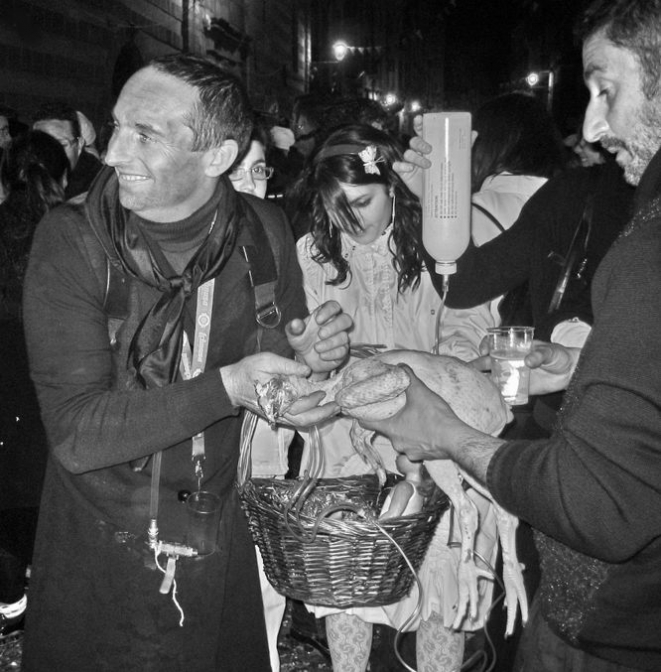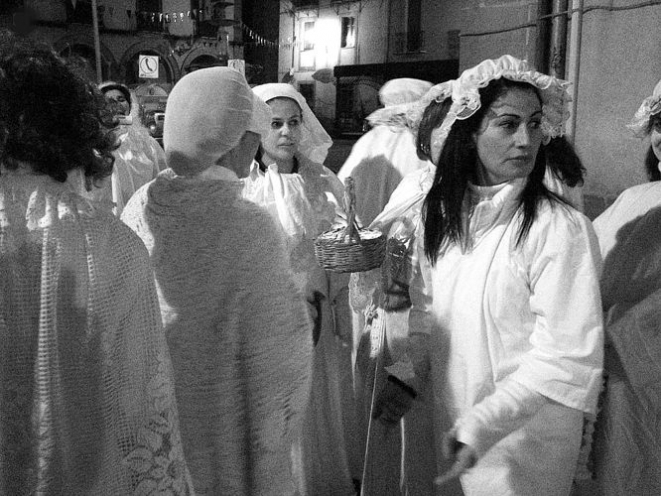Carrasegare Osincu
The folkloristic Carnival of Bosa
The Carrasegare Osincu is a Carnival unique in its kind in Sardinia for its literary and usual Goliardic feature. Bosa becomes the carnival proscenium par excellence, during which are alternated satire and irony, in clear contrast with the other traditional Sardinian Carnivals soaked of an innate tragedy.
The word defining the winter celebration is indicative of its most important days, as Sunday, Monday and Tuesday.
The week previous to Shrove Thursday inaugurates the beginning of the essentially playful festivity, aimed to the laugh and the fun of the whole community, that feels to be completely involved in the preparation and in the implementation of the official Carnival scenic representations. This time frame of ceremonial opening is called “Lardazholu” or “Laldaggiolu”, when groups of dressed up people burst into the other people’s house for collecting of alms. The folkloristic scene starts through the rhetorical question “sa palte cantare?” and through a continuation of traditional songs, such as “gosos” or “trallallera” in exchange for which they receive foods for the culinary organization of celebration.

Currently, during the Saturday previous to the end of the festivity, is organized the so-called Calebration of Wine cellars, an initiative promoted through the joint participation of the local managing authorities that offer guests wine and dishes typical of the place.
The conclusive day, but at the same time culminating, of the Carnival of Bosa, is Shrove Tuesday, a day dedicated to the masks parade, among which excels the main, that of King Giorgio, called Giolzi, a symbol of Carnival itself and represented by a puppet with rags and a barrel as a paunch. The other significant masks are those of “s’attitidu”, namely the funeral lament.

Since the first hours of the morning, participants occupy streets thanks to the presence of "Attittadoras", women who cry and play funeral laments, a forecast of Giolzi’s death. People try to captivate participants asking the women a tikkirigheddu de latte (a drop of milk) for the newborn abandoned by his mother distracted by celebration.
Dances begin: su ballu tundu (the round dance), su ballu e s’iskopa (the dance of broom), su ballu de sas kaderas (the dance of the chairs) are organized in the square.
The ceremony finishes through the parade of the classic white tunic for symbolizing the souls of the fading Carnival who wander to the jovial incursion, for researching Giolzi.
When they find this puppet, the satirical euphoria unloads in the King George’s blaze, the conclusive symbol of the little official festival, but aimed to the spontaneous collaboration of the crowd, engaged actively. So, the spontaneous feature of the celebration and the improvisation of community make the Carnival of Bosa not only an anniversary waited by people, but the true celebration of community.